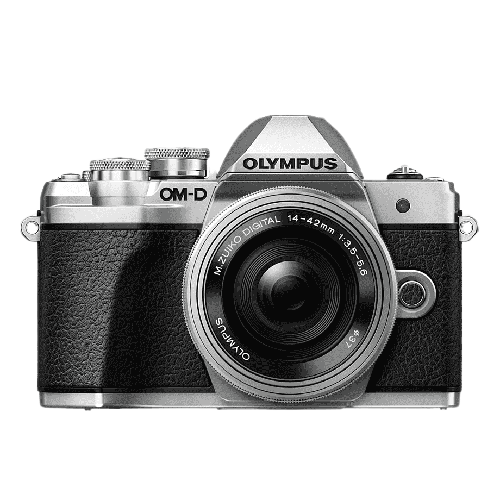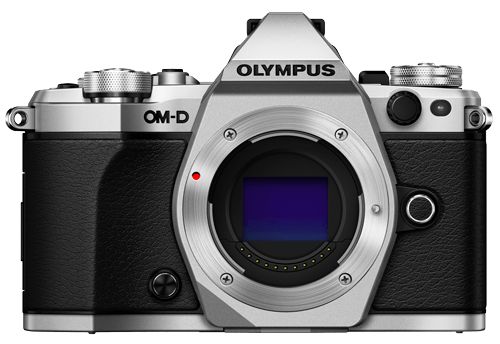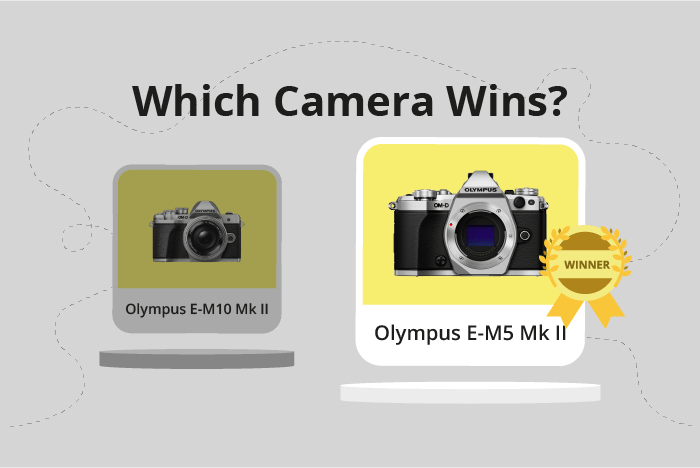Olympus OM-D E-M10 Mark II vs OM-D E-M5 Mark II Comparison
Olympus OM-D E-M10 Mark II

Olympus OM-D E-M5 Mark II

The Olympus OM-D E-M5 Mark II outperforms the Olympus OM-D E-M10 Mark II with a score of 59/100 to 54/100. Both cameras are mirrorless and were released in 2015. They share similar sizes, with the E-M5 Mark II measuring 124 x 85 x 45mm and the E-M10 Mark II at 120 x 83 x 47mm.
The E-M5 Mark II’s higher score reflects its superior performance. Its launch price of $1100 is higher than the E-M10 Mark II’s $650, but it offers more advanced features. The E-M5 Mark II also weighs more at 469g, compared to the E-M10 Mark II’s 390g, which may be a factor to consider for some users.
On the other hand, the E-M10 Mark II has a lower price and lighter weight, making it a more budget-friendly and portable option. However, its overall performance is not as impressive as the E-M5 Mark II.
Taking these factors into account, the Olympus OM-D E-M5 Mark II is the better camera due to its higher score and advanced features, while the E-M10 Mark II offers a more affordable and lighter alternative.
Olympus OM-D E-M10 Mark II vs OM-D E-M5 Mark II Overview and Optics
The Olympus OM-D E-M5 Mark II wins the optics comparison with a score of 58/100, while the Olympus OM-D E-M10 Mark II scores 57/100. Both cameras share several specifications, including 16.1 megapixels, CMOS sensor type, TruePic VII processor, a DXOMARK score of 73 for the sensor, Micro Four Thirds sensor size, Micro 4/3 lens mount, and image stabilization.
The E-M5 Mark II is better in terms of shooting speed, offering 10 frames per second (fps) compared to the E-M10 Mark II’s 8 fps. This advantage allows photographers to capture fast-moving subjects more effectively and produce smoother action sequences.
The E-M10 Mark II, on the other hand, does not have any notable advantages over the E-M5 Mark II in the optics department. Both cameras have the same sensor, processor, and image stabilization capabilities. However, the E-M10 Mark II’s slightly lower score suggests that it may have marginally inferior optics performance.
Considering the similarities between these two cameras, the difference in scores is minimal. The Olympus OM-D E-M5 Mark II’s higher shooting speed makes it the superior choice for capturing fast-moving subjects, but both cameras offer excellent performance in terms of image quality and stabilization. The Olympus OM-D E-M10 Mark II is still a solid choice for photographers who value high-quality optics, despite its marginally lower score.
Olympus OM-D E-M10 Mark II vs OM-D E-M5 Mark II Video Performance
The Olympus OM-D E-M10 Mark II and the Olympus OM-D E-M5 Mark II have the same video score of 70/100, indicating that their video capabilities are identical. Both cameras share common specifications in terms of video recording, which include a Full HD (1920 x 1080) maximum video resolution and a maximum video frame rate of 60fps. Additionally, both cameras have built-in time-lapse functionality.
The winning camera in this comparison is not determined by a higher score since both cameras have the same score. Instead, it is essential to examine their individual video features. However, as previously mentioned, the E-M10 Mark II and the E-M5 Mark II share the same video specifications, making it difficult to declare a clear winner based on video capabilities alone.
No specific advantages can be attributed to either camera in terms of video features since they are identical in this aspect. The E-M10 Mark II and E-M5 Mark II both provide users with the ability to record Full HD videos at a maximum resolution of 1920 x 1080 and a maximum frame rate of 60fps. Furthermore, the built-in time-lapse functionality in both cameras enhances their video capabilities.
In comparing the Olympus OM-D E-M10 Mark II and the Olympus OM-D E-M5 Mark II, it is evident that their video capabilities are on par with each other. Both cameras offer the same video specifications and features, making it difficult to declare a definitive winner based on video capabilities alone. Users looking to choose between these two cameras should consider other factors, such as price, design, and additional features, to make an informed decision.
Olympus OM-D E-M10 Mark II vs OM-D E-M5 Mark II Features and Benefits
The Olympus OM-D E-M5 Mark II wins the feature comparison with a score of 70/100, while the Olympus OM-D E-M10 Mark II scores 57/100. Both cameras share several specifications, making them comparable in many aspects. They both have a 3-inch touchscreen, flip screen, WiFi connectivity, and neither has GPS or Bluetooth capabilities.
The E-M5 Mark II outperforms the E-M10 Mark II in certain areas. Although both cameras have a 3-inch screen, the E-M5 Mark II has a slightly higher screen resolution at 1,037,000 dots compared to the E-M10 Mark II’s 1,040,000 dots. This difference in resolution contributes to the E-M5 Mark II’s higher feature score.
In contrast, the E-M10 Mark II has some advantages over the E-M5 Mark II, even with its lower feature score. The E-M10 Mark II is a more affordable option for those seeking a quality camera without breaking the bank. Additionally, the E-M10 Mark II is lighter and more compact, making it a more convenient option for those who prioritize portability.
After examining each camera’s features, it is clear that the Olympus OM-D E-M5 Mark II is the superior camera in terms of specifications. Its higher screen resolution and overall feature score make it a better choice for photographers seeking top-notch performance. However, the Olympus OM-D E-M10 Mark II still offers excellent value for its price and is a suitable option for those prioritizing affordability and portability.
Olympus OM-D E-M10 Mark II vs OM-D E-M5 Mark II Storage and Battery
The Olympus OM-D E-M10 Mark II and the Olympus OM-D E-M5 Mark II have identical storage and battery scores of 21/100. Both cameras share the same storage specifications, with one memory card slot each and compatibility with SD, SDHC, and SDXC cards. Neither of the cameras supports USB charging.
The E-M10 Mark II has a slight advantage in battery life, providing 320 shots per charge compared to the E-M5 Mark II’s 310 shots. This difference is minimal but may be important for extended shooting sessions. The E-M10 Mark II uses a BLS-50 battery, while the E-M5 Mark II uses a BLN-1 battery.
No particular advantages are present for the E-M5 Mark II in terms of storage and battery. The E-M10 Mark II’s marginally longer battery life is the only distinguishing factor between the two cameras in this aspect. Therefore, the Olympus OM-D E-M10 Mark II is the preferable choice for those prioritizing battery life, albeit by a small margin.
Olympus OM-D E-M10 Mark II vs OM-D E-M5 Mark II – Our Verdict
Are you still undecided about which camera is right for you? Have a look at these popular comparisons that feature the Olympus OM-D E-M10 Mark II or the Olympus OM-D E-M5 Mark II:

